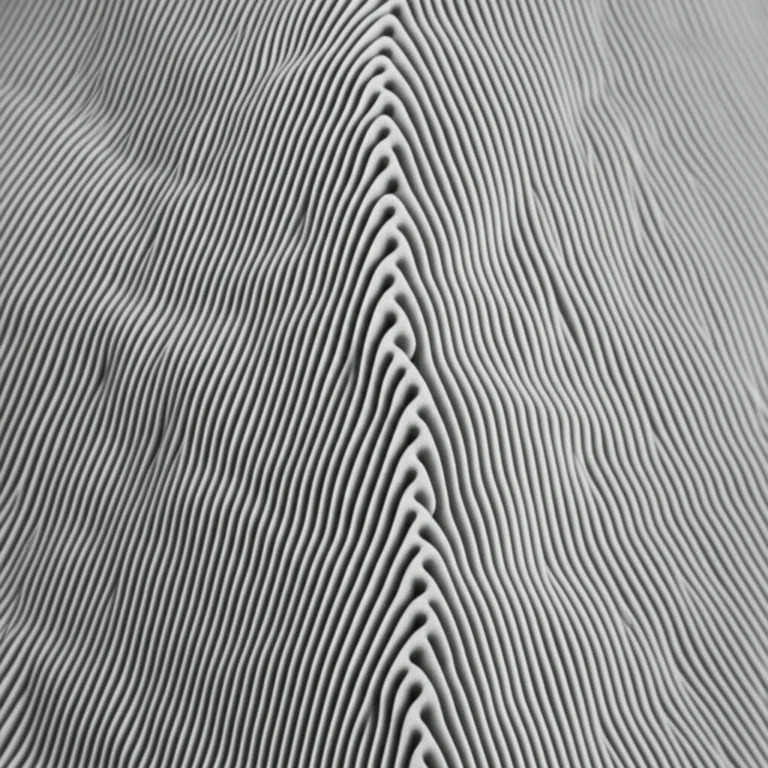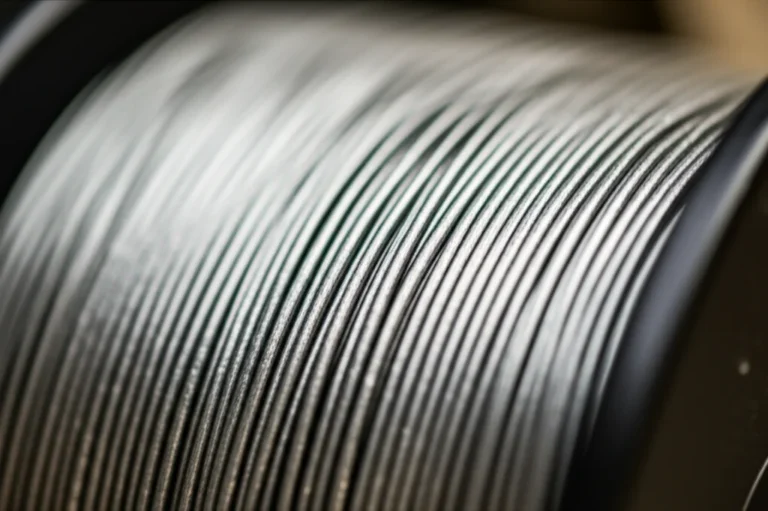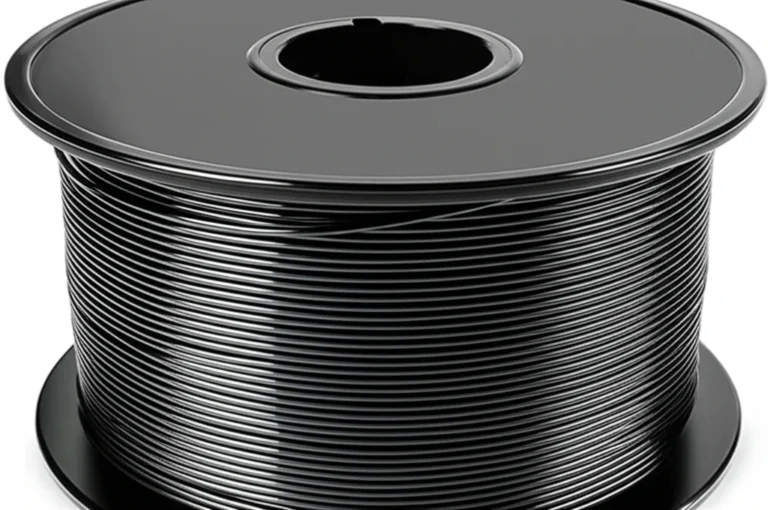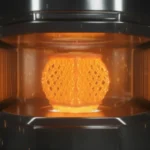Support our educational content for free when you purchase through links on our site. Learn more
Is PLA Biodegradable? 15 Truths Every 3D Printer Must Know (2025) 🌿
You’ve probably heard that PLA filament is the eco-friendly hero of 3D printing — made from corn, compostable, and totally biodegradable, right? Well, not so fast! While PLA does come from renewable resources, its biodegradability is far from straightforward. Imagine tossing your failed prints into your garden compost and watching them vanish like magic… but spoiler alert: that rarely happens. In fact, PLA often sticks around for years unless it’s treated just right in industrial composting facilities.
At 3D Printed™, we’ve dug deep into the science, the myths, and the real-world impact of PLA biodegradability. From why your backyard compost isn’t a PLA paradise to how recycled PLA filament can help close the sustainability loop, this article unpacks 15 essential truths every maker should know before hitting “print.” Ready to separate fact from fiction and become a greener 3D printing wizard? Let’s dive in!
Key Takeaways
- PLA is biodegradable only under industrial composting conditions — your home compost or landfill won’t cut it.
- Recycling PLA is possible but limited; specialized facilities and separate collection are required.
- Using recycled PLA filament (like from Filamentive or 3D4Makers) helps reduce environmental impact.
- PLA’s production uses renewable resources but also raises concerns about land use and food supply.
- Proper disposal and eco-conscious printing practices are critical to truly minimize PLA’s footprint.
- Alternatives like PHA and PBS exist but are not yet widely accessible or perfect.
Ready to print greener? Check out recycled PLA filament options from:
- Filamentive: Thingiverse | Amazon | Filamentive Official Website
- Prusament: Thingiverse | Prusa Research
- ColorFabb: Thingiverse | ColorFabb Official Website
Table of Contents
- ⚡️ Quick Tips and Facts
- The PLA Story: From Corn to Creation 🌽
- Unpacking the ‘Biodegradable’ Claim: What Does it Really Mean for PLA? 🤔
- The Composting Conundrum: Why Your Backyard Isn’t a PLA Paradise 🏡
- Industrial Composting vs. Home Composting: The Crucial Difference 🏭
- Factors Affecting PLA Degradation: It’s More Complex Than You Think! 🌡️💧
- The Environmental Footprint of PLA: Beyond Biodegradability 👣
- The 3D Printing Waste Dilemma: Where Does All That PLA Go? 🗑️
- Can We Recycle PLA? The Realities of PLA Recycling ♻️
- The Promise of Recycled PLA Filament: Closing the Loop 🔄
- Beyond Recycling: Innovative Solutions for PLA Waste 💡
- PLA vs. ABS vs. PETG: A Biodegradability Showdown! 🥊
- Exploring Truly Biodegradable Alternatives for 3D Printing 🌱
- Practical Steps for Eco-Conscious 3D Printing: Be a Green Maker! 🌍
- Choosing Your Filament Wisely: Brands Making a Difference ✨
- Conclusion
- Recommended Links
- FAQ
- Reference Links
⚡️ Quick Tips and Facts
Welcome to the ultimate deep dive on PLA biodegradability! Before we get into the nitty-gritty, here are some quick hits from the 3D Printed™ team to get you started:
- PLA (Polylactic Acid) is a bioplastic made from renewable resources like corn starch or sugarcane. 🌽
- It’s biodegradable only under industrial composting conditions — think high heat (55-70°C), humidity, and specialized microbes. ❌ Your backyard compost pile won’t cut it.
- PLA does not readily biodegrade in soil, home compost, or landfill environments — it can persist for decades otherwise. 😬
- Recycling PLA is possible but requires separate collection and specialized facilities; it can’t be tossed in with regular plastics. ♻️
- About 33% of 3D prints end up as waste, and PLA waste contributes significantly to landfill plastic pollution. 😞
- Using recycled PLA filament (like Filamentive’s RPLA) helps close the loop and reduce environmental impact. 🔄
- PLA emits fewer toxic fumes than ABS during printing but can still release nanoparticles and additives — ventilation is key! 💨
- Alternatives to PLA exist but none are perfect yet; ongoing innovation aims for truly green, biodegradable filaments. 🌱
For a detailed exploration of how PLA biodegrades (or doesn’t), recycling options, and eco-friendly 3D printing tips, keep reading! We’ll unravel the myths, science, and practical advice to help you print smarter and greener. And if you want to know how long your 3D printed objects last, check out our related article: Do 3D printed things last?.
The PLA Story: From Corn to Creation
PLA’s journey starts in the fields, not the oil rigs. It’s made from renewable plant-based materials like corn starch or sugarcane, which are fermented into lactic acid and then polymerized into polylactic acid. This bio-based origin gives PLA its “green” reputation.
How PLA is Made
- Step 1: Extract starch from corn or sugarcane.
- Step 2: Convert starch into dextrose (simple sugar).
- Step 3: Ferment dextrose into lactic acid.
- Step 4: Polymerize lactic acid into PLA pellets.
- Step 5: Extrude pellets into filament for 3D printing.
It takes roughly 2.65 kg of corn to make 1 kg of PLA filament. While this sounds eco-friendly, it raises concerns about land use and food supply, especially if PLA production scales massively. 🌾
PLA’s Appeal in 3D Printing
- Easy to print with low warping and odor.
- Biodegradable under specific conditions.
- Derived from renewable resources.
- Widely available from brands like Prusament, Hatchbox, and ColorFabb.
But as we’ll see, the “biodegradable” label is more complicated than it seems.
Unpacking the Biodegradable Claim: What Does it Really Mean for PLA?
“Biodegradable” sounds like a magic word, but it’s not a free pass to toss PLA anywhere. Biodegradability means microorganisms can break down the material into natural substances like water, CO2, and biomass — but only under the right conditions.
Key Points About PLA Biodegradability
- PLA requires industrial composting conditions: temperatures above 55-70°C, high humidity, and specific microbes.
- In natural environments (soil, ocean, home compost), PLA breaks down very slowly, sometimes taking decades or more.
- PLA is compostable under standards like EN 13432, which mandates 90% conversion within 6 months in industrial facilities.
- Home composting is ineffective for PLA due to insufficient heat and microbial activity.
- PLA biodegradation involves hydrolysis (water breaking ester bonds) followed by microbial digestion.
So, the takeaway? PLA’s biodegradability is conditional and limited. Don’t expect your failed prints to vanish in your garden compost bin anytime soon.
The Composting Conundrum: Why Your Backyard Isn’t a PLA Paradise
We love the idea of tossing failed prints into the compost, but your backyard pile isn’t a PLA-friendly environment.
Why Home Composting Fails for PLA
- Typical compost piles max out around 30-40°C, far below the 55-70°C needed.
- Lack of specialized microbes that can digest PLA.
- Lower humidity and inconsistent conditions slow degradation.
- PLA can persist for years or decades in home composts.
Industrial Composting to the Rescue
Industrial composting plants maintain:
- High temperatures (above 58°C)
- Controlled moisture and oxygen levels
- Microbial communities optimized for PLA breakdown
Under these conditions, PLA can degrade significantly within 30-60 days.
Unfortunately, access to industrial composting is limited, and many municipal compost facilities don’t accept PLA due to contamination concerns.
Industrial Composting vs. Home Composting: The Crucial Difference
| Feature | Industrial Composting | Home Composting |
|---|---|---|
| Temperature | 55-70°C (130-160°F) | 20-40°C (68-104°F) |
| Microbial Activity | Specialized microbes for PLA | General microbes, limited PLA digestion |
| Humidity | Controlled, high | Variable, often lower |
| Time to Degrade PLA | 30-60 days | Years to decades |
| Facility Availability | Limited, specialized plants | Widely available at home |
| Acceptance of PLA Waste | Often accepted | Usually rejected or ineffective |
Bottom line: If you want your PLA to biodegrade properly, industrial composting is the only reliable route. Home composting? Not so much.
Factors Affecting PLA Degradation: It’s More Complex Than You Think! 🌡️💧
PLA biodegradation isn’t just about heat. Several factors influence how fast or slow PLA breaks down:
- Temperature: Higher temps accelerate hydrolysis.
- Moisture: Water is essential for breaking ester bonds.
- pH: Neutral to slightly acidic (5.5-8.0) environments favor degradation.
- Oxygen: Aerobic conditions help microbes thrive.
- Microbial presence: Specific bacteria and fungi are required.
- PLA crystallinity: More crystalline PLA resists degradation.
- Additives and colorants: Some additives slow or speed up breakdown.
This complexity means PLA’s fate varies widely depending on disposal environment.
The Environmental Footprint of PLA: Beyond Biodegradability 👣
PLA’s renewable origin gives it a smaller carbon footprint than petroleum-based plastics like ABS or PETG. But it’s not a perfect green hero.
Pros
- Lower greenhouse gas emissions during production.
- Made from renewable resources.
- Potential for industrial composting.
Cons
- Uses agricultural land and water resources.
- Can compete with food crops.
- Requires energy-intensive industrial composting to biodegrade.
- Often ends up in landfill or incinerated.
- Emits nanoparticles and additives during printing.
The key is responsible use and disposal to truly minimize environmental impact.
The 3D Printing Waste Dilemma: Where Does All That PLA Go? 🗑️
Here’s a sobering fact: about 33% of 3D prints end up as waste — failed prints, supports, prototypes, and test pieces. For PLA users, this means a lot of bioplastic potentially going to landfill.
What Happens to PLA Waste?
- Landfill: Most common, but PLA degrades very slowly here.
- Incineration: Generates energy but releases CO2.
- Industrial composting: Rarely accessible for most hobbyists.
- Recycling: Limited by lack of collection and sorting infrastructure.
- Upcycling: Creative reuse into new prints or crafts.
The challenge? Without proper waste management, PLA’s environmental benefits are lost.
Can We Recycle PLA? The Realities of PLA Recycling ♻️
PLA recycling is technically possible but not straightforward.
Challenges
- PLA must be collected separately from other plastics to avoid contamination.
- Most municipal recycling programs do not accept PLA.
- PLA recycling requires specialized facilities that can process bioplastics.
- Mixed plastic recycling streams can be ruined by PLA contamination.
Existing Solutions
- Companies like Filamentive and 3D Printing Waste UK offer PLA recycling and closed-loop filament production.
- Some filament brands produce recycled PLA filament from post-industrial or post-consumer waste.
What You Can Do
- Check if local recycling accepts PLA.
- Use dedicated PLA recycling programs if available.
- Consider upcycling failed prints into new projects.
The Promise of Recycled PLA Filament: Closing the Loop 🔄
Using recycled PLA filament is a smart way to reduce your 3D printing footprint.
| Brand | Recycled Content | Source of Waste | Eco Features | Availability |
|---|---|---|---|---|
| Filamentive | ~87% | Post-industrial extrusion | Cardboard spools, circular economy | Widely available online |
| 3D4Makers | Varies | Post-consumer & industrial | Biobased additives, recycled | Select retailers |
| ColorFabb | Limited | Post-industrial | High-quality recycled blends | Select markets |
Benefits
- Diverts PLA waste from landfill.
- Reduces virgin material demand.
- Supports circular economy principles.
- Often performs comparably to virgin PLA.
Drawbacks
- May have slight color or mechanical property variations.
- Availability can be limited.
Beyond Recycling: Innovative Solutions for PLA Waste 💡
The 3D printing community is buzzing with creative ideas to tackle PLA waste:
- Upcycling: Turning failed prints into new filament or art projects.
- Chemical recycling: Breaking PLA down to lactic acid monomers for reuse.
- Biodegradation research: Developing enzymes and microbes to degrade PLA in natural environments.
- Filament blending: Combining PLA with other biodegradable polymers for improved properties.
- Closed-loop systems: Brands like Filamentive and Reflow promote take-back and recycling programs.
These innovations hint at a greener future for PLA and 3D printing waste management.
PLA vs. ABS vs. PETG: A Biodegradability Showdown! 🥊
| Feature | PLA | ABS | PETG |
|---|---|---|---|
| Origin | Renewable (corn, sugarcane) | Petroleum-based | Petroleum-based |
| Biodegradability | Industrial composting only | Very low/none | Very low/none |
| Ease of Printing | Easy | Moderate | Moderate |
| Strength & Durability | Moderate | High | High |
| Emissions During Print | Low to moderate | High | Moderate |
| Recycling Availability | Limited specialized | Widely recycled | Widely recycled |
PLA wins on renewability and potential biodegradability, but ABS and PETG offer superior durability and recycling infrastructure. Choose based on your project needs and environmental priorities.
Exploring Truly Biodegradable Alternatives for 3D Printing 🌱
PLA isn’t the only bioplastic on the block, but alternatives are still emerging:
- PHA (Polyhydroxyalkanoates): Fully biodegradable in natural environments but expensive and less available.
- PBS (Polybutylene succinate): Biodegradable and compostable, but limited filament options.
- Genecis polymers: Experimental filaments designed to degrade in natural environments within ~12 months.
- Bio-based composites: PLA blended with natural fibers like hemp or coffee grounds for enhanced biodegradability.
While promising, these alternatives often face trade-offs in cost, printability, and mechanical properties.
Practical Steps for Eco-Conscious 3D Printing: Be a Green Maker! 🌍
Want to reduce your 3D printing environmental impact? Here’s how:
- Print only what you need: Avoid unnecessary prototypes and test prints.
- Optimize print settings: Use supports sparingly and reduce infill.
- Recycle and upcycle: Use recycled PLA filament and repurpose failed prints.
- Proper disposal: Find industrial composting or recycling programs for PLA waste.
- Ventilate your workspace: Minimize inhalation of emissions during printing.
- Choose eco-friendly brands: Support companies with sustainable practices.
- Educate yourself: Stay informed on filament innovations and waste solutions.
These small steps add up to a big difference!
Choosing Your Filament Wisely: Brands Making a Difference ✨
Here are some standout brands leading the charge in sustainable PLA filament:
| Brand | Eco Features | Where to Find |
|---|---|---|
| Filamentive | High recycled content, cardboard spools | Filamentive Official |
| Prusament | Transparent sourcing, quality control | Prusa Research |
| ColorFabb | Post-industrial recycled blends | ColorFabb |
| 3D4Makers | Biobased additives, recycled options | 3D4Makers |
| Hatchbox | Widely available, some eco-conscious lines | Hatchbox on Amazon |
Pro tip: Always check filament specs and certifications for biodegradability and recycled content. Your filament choice matters!
Conclusion

So, is PLA truly biodegradable? The short answer is: yes, but only under very specific industrial composting conditions. Your backyard compost pile or the local landfill won’t do the trick. PLA’s promise as a green alternative hinges on access to high-temperature, high-humidity facilities with the right microbes — conditions that most hobbyists and consumers simply don’t have.
From our deep dive, here’s the bottom line:
✅ Positives of PLA:
- Made from renewable resources like corn and sugarcane.
- Biodegradable in industrial composting environments.
- Easier and cleaner to print than many other filaments.
- Lower carbon footprint compared to petroleum-based plastics.
- Recycling and upcycling options are emerging and growing.
❌ Negatives of PLA:
- Does not biodegrade effectively in home compost or natural environments.
- Requires specialized recycling streams, which are limited.
- Production uses agricultural land that could compete with food crops.
- Emits nanoparticles and additives during printing — ventilation is necessary.
- Industrial composting access is scarce for most users.
If you’re a 3D printing enthusiast looking to minimize your environmental impact, we strongly recommend:
- Using recycled PLA filament from brands like Filamentive or 3D4Makers.
- Properly disposing of PLA waste through industrial composting or specialized recycling programs where available.
- Reducing print waste by optimizing designs and print settings.
- Ventilating your workspace to avoid inhaling emissions.
PLA is a step in the right direction, but it’s not a silver bullet. By understanding its limitations and making informed choices, you can help push the 3D printing community toward a truly sustainable future.
Recommended Links
Ready to shop eco-friendly PLA filament or dive deeper into the science? Check these out:
-
Filamentive Recycled PLA Filament:
Thingiverse | Amazon | Filamentive Official Website -
Prusament PLA Filament:
Thingiverse | Prusa Research -
ColorFabb Recycled PLA Blends:
Thingiverse | ColorFabb Official Website -
3D4Makers Eco-Friendly PLA:
Thingiverse | 3D4Makers Official Website -
Books on Bioplastics and Sustainable 3D Printing:
FAQ

What is PLA made of and is it compostable?
PLA (Polylactic Acid) is a bioplastic derived from renewable plant materials, primarily corn starch or sugarcane. It is compostable only under industrial composting conditions, which means it requires sustained high temperatures (55-70°C), humidity, and specific microorganisms to break down effectively. In home compost or natural environments, PLA does not compost efficiently and can persist for years.
How long does it take for PLA to biodegrade in different environments?
- Industrial composting: PLA can degrade significantly within 30-60 days under controlled heat and moisture.
- Home composting: PLA degradation is very slow, potentially taking years or decades due to insufficient heat and microbial activity.
- Landfill or natural soil: PLA behaves similarly to conventional plastics, with degradation times stretching to decades or longer.
- Ocean environments: PLA is not readily biodegradable and can persist, contributing to marine pollution.
Is ABS more or less biodegradable than PLA for 3D printing purposes?
ABS (Acrylonitrile Butadiene Styrene) is a petroleum-based plastic with a complex molecular structure that makes it far less biodegradable than PLA. ABS can persist in the environment for centuries, whereas PLA can biodegrade under industrial composting conditions. However, ABS has a more established recycling infrastructure, while PLA recycling remains limited.
Read more about “What Are the Eye-Opening Statistics of 3D Printers? 📊 …”
Can I make my 3D printed PLA objects more biodegradable with special treatments or additives?
While some manufacturers add biobased additives (like coffee grounds, wheat, or mussel shells) to PLA to enhance biodegradability or mechanical properties, these do not drastically change PLA’s fundamental composting requirements. Treatments like UV exposure or chemical baths may accelerate surface degradation but won’t make PLA compostable in home conditions. The best way to ensure biodegradability is to dispose of PLA in industrial composting facilities.
How can I safely handle emissions from 3D printing PLA?
PLA emits fewer toxic fumes than ABS but can still release nanoparticles and volatile organic compounds (VOCs) during printing. To minimize health risks:
- Print in a well-ventilated area or use an enclosure with a HEPA filter.
- Avoid prolonged exposure to fumes.
- Use high-quality filaments with fewer additives.
- Consider air purifiers if printing indoors frequently.
Are there truly biodegradable filaments better than PLA?
Currently, PHA (Polyhydroxyalkanoates) and some experimental polymers like those from Genecis show promise for biodegrading in natural environments within about a year. However, these filaments are generally more expensive, less widely available, and may have different printing challenges. PLA remains the most accessible “biodegradable” filament but with caveats.
Read more about “45 Most Useful PLA 3D Prints to Transform Your Life in 2025 🎉”
Reference Links
- Filamentive – The Truth About PLA Biodegradability
- Wevolver – Is PLA Biodegradable? What to Do With Scrap Filament
- 3Dnatives – Is PLA filament actually biodegradable?
- Prusa Research – Prusament PLA Filament
- Filamentive Official Website
- ColorFabb Official Website
- 3D4Makers Official Website
- European Standard EN 13432 on Compostability
For more on 3D printing innovations and sustainability, visit our 3D Printing Innovations and 3D Printable Objects sections at 3D Printed™.




